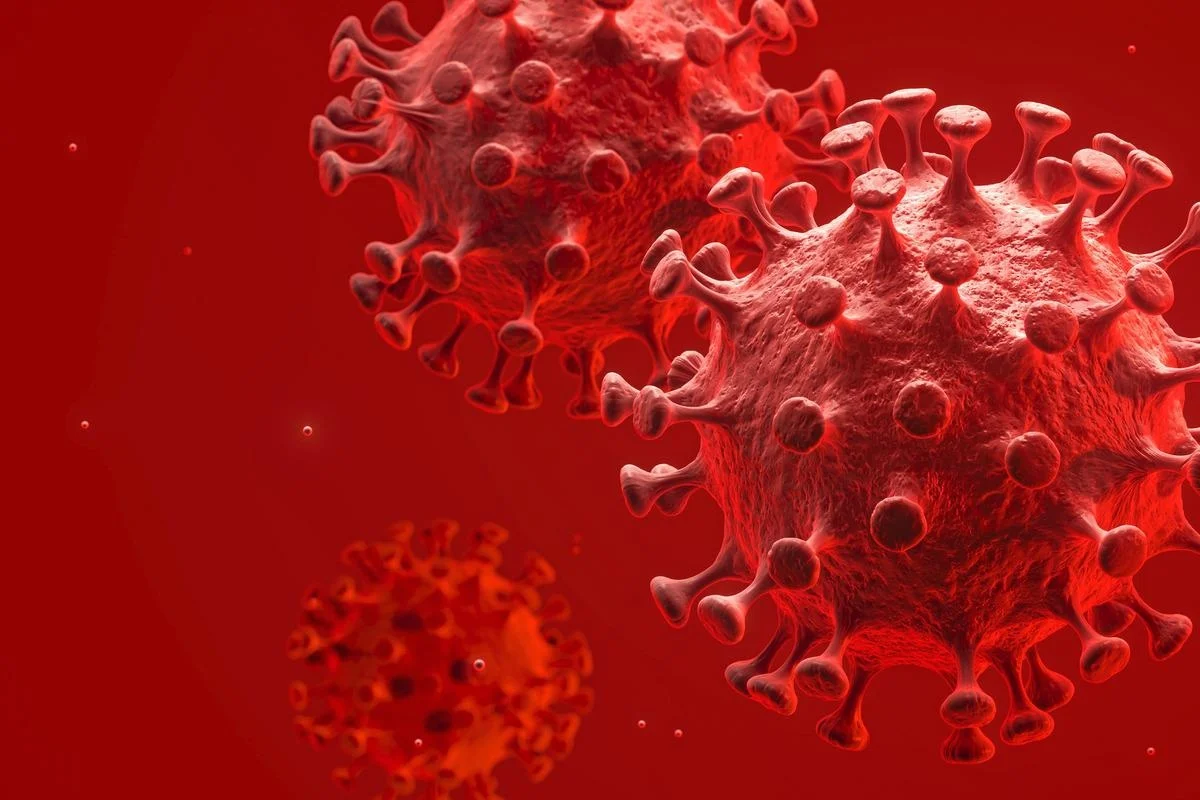
When it comes to understanding the intricate workings of the biological world, one cannot overlook the fascinating role played by cyclins. These tiny proteins, often referred to as the “orchestra conductors” of the cell cycle, are vital for controlling the progression of cells through various stages of growth and division.
In this article, we will explore 12 intriguing facts about cyclins that will shed light on their significance in the field of biology. From their discovery to their involvement in diseases such as cancer, these facts will not only captivate your interest but also provide a deeper understanding of the intricate mechanisms that drive life itself.
Key Takeaways:
- Cyclins are protein superheroes that control cell division by teaming up with CDKs. They have specific roles in different stages of the cell cycle and are crucial for maintaining the balance of cell division.
- Understanding cyclins is like unlocking the secrets of cell division. Their dysregulation can lead to cancer, but research on cyclins has paved the way for targeted cancer therapies, offering hope for better treatments.
Cyclins play a crucial role in cell cycle regulation.
Cyclins are a family of proteins that regulate the progression of the cell cycle. They work by binding to and activating cyclin-dependent kinases (CDKs), which are enzymes responsible for driving the cell cycle forward.
There are different types of cyclins, each with its own specific function.
Cyclins are classified into several types, including G1 cyclins, S cyclins, and M cyclins, based on their involvement in different stages of the cell cycle. Each type of cyclin is responsible for regulating specific checkpoints and events during cell division.
Cyclins are named after their cyclical levels of expression.
The name “cyclin” comes from the cyclical pattern of their expression throughout the cell cycle. Their levels rise and fall in a coordinated manner to ensure the proper progression of the cell cycle.
Cyclins bind to CDKs to form active complexes.
When cyclins bind to CDKs, they form active complexes that phosphorylate target proteins involved in cell cycle regulation. This phosphorylation cascade triggers the events necessary for cell division.
Cyclins are regulated by various mechanisms.
The expression and activity of cyclins are tightly regulated to maintain the proper balance of cell division. This regulation involves factors such as protein degradation, transcriptional control, and post-translational modifications.
Cyclin D is a key regulator of the G1 phase of the cell cycle.
Cyclin D, along with its binding partners CDK4 and CDK6, controls the transition from the G1 phase to the S phase of the cell cycle. It ensures that the cell has undergone the necessary preparations before DNA replication occurs.
Cyclin E is involved in the initiation of DNA synthesis.
Cyclin E forms a complex with CDK2 and plays a crucial role in the initiation of DNA synthesis during the S phase. It promotes the assembly of the replication machinery and the unwinding of DNA strands.
Cyclin A is important for DNA replication and mitosis.
Cyclin A associates with CDK2 in the S phase to promote DNA replication and later with CDK1 in the G2 phase to initiate mitosis. It ensures the proper coordination between DNA replication and cell division.
Cyclin B regulates the transition from G2 phase to mitosis.
Cyclin B, in complex with CDK1, triggers the transition from the G2 phase to mitosis. It promotes the breakdown of the nuclear envelope and the assembly of the mitotic spindle.
Cyclins are involved in the pathogenesis of cancer.
Abnormal expression or mutations in cyclins or their associated proteins can lead to uncontrolled cell division, a hallmark of cancer. Understanding the dysregulation of cyclins has important implications for cancer diagnosis and treatment.
Cyclins have evolutionary conserved roles.
Cyclins and their associated kinases are found in a wide range of organisms, from yeast to humans. This conservation highlights the fundamental importance of cyclins in regulating the cell cycle and underscores their evolutionary significance.
Research on cyclins has paved the way for targeted cancer therapies.
Insights into the role of cyclins in cell cycle regulation have led to the development of targeted therapies that specifically inhibit cyclin-dependent kinases. These drugs show promise in treating various types of cancer and are currently being evaluated in clinical trials.
Conclusion
Cyclins are fascinating proteins that play a crucial role in regulating the cell cycle. From their discovery to their diverse functions, learning about cyclins provides insights into the intricate mechanisms that control cell division. The twelve intriguing facts about cyclins highlighted in this article shed light on their importance and complexity.
By understanding the different types of cyclins, their role in cell cycle progression, and their association with cyclin-dependent kinases, scientists can gain valuable insights into various cellular processes and diseases. The discoveries related to cyclins have paved the way for groundbreaking research and therapeutic advancements in areas such as cancer treatment and developmental biology.
As research continues to unravel the mysteries of cyclins, it is certain that their significance will continue to grow, contributing to our understanding of fundamental biological processes and potentially leading to novel therapeutic interventions.
FAQs
Q: What are cyclins?
A: Cyclins are a family of proteins that regulate the progression of the cell cycle by forming complexes with cyclin-dependent kinases (CDKs).
Q: How many types of cyclins are there?
A: There are several types of cyclins, named A, B, C, D, and E. Each type functions at specific points in the cell cycle.
Q: What is the function of cyclins in the cell cycle?
A: Cyclins help activate cyclin-dependent kinases (CDKs), enabling them to phosphorylate target proteins and drive the progression of the cell cycle.
Q: Do cyclins have any role in human diseases?
A: Yes, alterations in cyclin expression and function have been linked to various diseases, including cancer and developmental disorders.
Q: How do cyclins regulate the cell cycle?
A: Cyclins bind to specific cyclin-dependent kinases (CDKs), allowing the formation of active complexes that control the progression of the cell cycle.
Q: Are cyclins only present in animal cells?
A: No, cyclins have been identified in a wide range of organisms, including plants, fungi, and bacteria.
Q: Can cyclins be targeted for therapeutic purposes?
A: Yes, targeting cyclins and cyclin-dependent kinases (CDKs) has shown promise in the development of cancer therapies.
Q: Are there any drugs that target cyclins?
A: Yes, there are cyclin-dependent kinase inhibitors (CDKIs) that specifically target cyclin-CDK complexes and are being explored as potential anticancer drugs.
Q: How were cyclins discovered?
A: Cyclins were initially discovered in studies of the cell cycle of sea urchin eggs, where researchers observed periodic fluctuations in their protein levels.
Q: What happens if cyclins are not properly regulated?
A: Dysregulation of cyclin levels or activity can lead to abnormal cell cycle progression, which can contribute to the development of diseases, including cancer.
Q: Can cyclins be used as biomarkers?
A: Yes, altered expression of cyclins has been associated with certain types of cancer and can serve as prognostic or diagnostic biomarkers.
Q: Are cyclins involved in embryonic development?
A: Yes, cyclins play a crucial role in regulating cell division and differentiation during embryonic development.
Unraveling the secrets of cyclins has shed light on their pivotal role in cell cycle regulation, but there's more to discover in the fascinating world of cell biology. Cyclin-dependent kinases (CDKs), the loyal partners of cyclins, hold equally captivating secrets waiting to be explored. By delving into the intricacies of these molecular machines, we can gain a deeper understanding of how cells grow, divide, and maintain their proper function. So, let's embark on another exciting journey and uncover 15 astounding facts about CDKs, the unsung heroes of the cell cycle.
Was this page helpful?
Our commitment to delivering trustworthy and engaging content is at the heart of what we do. Each fact on our site is contributed by real users like you, bringing a wealth of diverse insights and information. To ensure the highest standards of accuracy and reliability, our dedicated editors meticulously review each submission. This process guarantees that the facts we share are not only fascinating but also credible. Trust in our commitment to quality and authenticity as you explore and learn with us.


